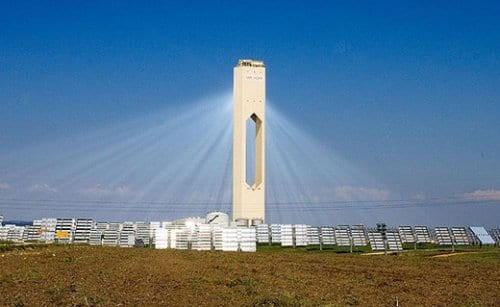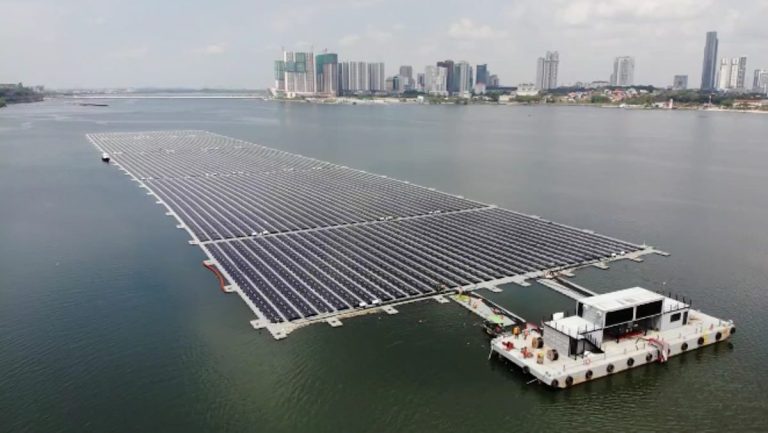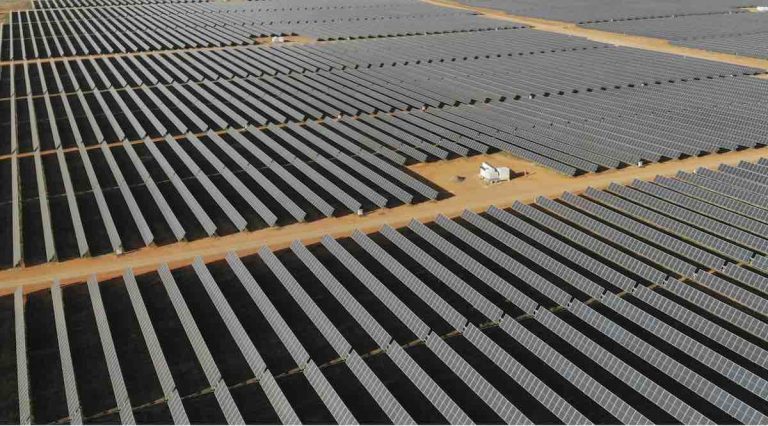Port Augusta’s Solar Tower Project: Innovative Engineering or Too Late?
Australia’s energy landscape is evolving rapidly, with rooftop solar installations becoming ubiquitous and utility-scale solar projects continuously adding gigawatts to the grid. The emergence of batteries at a scale previously unimaginable is also reshaping the energy storage sector.
In this dynamic environment, Vast’s VS1 concentrating solar power (CSP) project in Port Augusta presents an alternative solution for evening electricity generation, reminiscent of technologies that have been trialled in other regions but are seldom implemented today.
Understanding the VS1 Concept
The VS1 project operates on a straightforward principle: mirrors focus sunlight onto a sodium receiver located atop a tower. The heat generated is transferred to molten salt tanks on the ground, where it is stored. This stored heat is then converted into electricity via a steam turbine, providing power for approximately eight hours after sunset.
With the recent announcement of the Ivanpah CSP plant in California shutting down two-thirds of its generation capacity decades ahead of schedule, it is crucial for Australia to carefully consider the funding and construction of the VS1 project.
Historical Context of CSP Technology
To appreciate the potential of VS1, it is essential to look at the broader history of CSP technology. The first significant wave of modern CSP plants emerged in California during the 1980s and 1990s with the SEGS parabolic trough systems, demonstrating that thermal solar could effectively connect to the grid. A subsequent boom occurred in Spain between 2007 and 2013, driven by favourable feed-in tariffs.
Projects like Andasol and Gemasolar introduced molten salt storage on a large scale, while later developments in the United States aimed to establish these technologies as industry standards. However, challenges arose, as seen with Ivanpah’s underperformance and Crescent Dunes’ operational issues, highlighting the difficulties in translating theoretical designs into reliable field performance.
Lessons from Global CSP Projects
Successful projects, such as Morocco’s Noor complex and Chile’s Cerro Dominador, demonstrated that thermal storage could effectively provide evening solar energy on a national scale. Yet, these projects also revealed significant challenges, including high capital costs, stringent construction timelines, and vulnerability to policy shifts.
During this period, the cost of photovoltaic (PV) modules plummeted, and factory-produced lithium batteries transitioned from experimental to mainstream products. As the cost of solar PV and batteries continues to decline, CSP systems must consistently prove their economic viability to remain competitive.
Operational Challenges of CSP
Maintaining a CSP plant’s ability to deliver evening electricity necessitates regular field maintenance. Each heliostat must be meticulously calibrated to ensure optimal performance, as even minor errors across numerous mirrors can significantly reduce output. Additionally, CSP systems are more susceptible to environmental factors, such as dust and haze, which can further diminish efficiency.
Moreover, the heat transfer process within CSP systems incurs losses at each stage, resulting in higher capital and operational costs compared to PV systems paired with batteries. The VS1 project attempts to mitigate some of these challenges by using liquid sodium in the receiver loop while keeping the molten salt storage at ground level, thus reducing risks associated with freezing and simplifying the plumbing.
Financial Considerations and Risk Management
When evaluating the financial feasibility of the VS1 project, it is essential to consider historical data on CSP projects. By applying Flyvbjerg’s reference class forecasting, which compares new projects to similar past endeavours, stakeholders can better anticipate potential overruns and delays. This approach helps to establish realistic budgets and timelines, accounting for the inherent risks associated with CSP technology.
For instance, if the VS1 project experiences a 20% cost overrun, the levelised cost of electricity (LCOE) could rise significantly, making it less competitive against PV and battery systems. Therefore, it is crucial for the project to secure a robust financing plan that accommodates potential delays and cost increases.
Comparing CSP with PV and Battery Systems
In the context of Australia’s energy grid, the comparison between VS1 and PV plus battery systems is unavoidable. South Australia, in particular, faces a significant midday solar surplus and a steep evening demand ramp. With utility-scale PV and large batteries being deployed rapidly, the question arises whether a CSP plant can match or exceed the cost-effectiveness of these alternatives.
While VS1 has certain advantages, such as providing physical inertia and voltage support through its steam turbine, it must still demonstrate its ability to deliver reliable and affordable electricity. The operational complexities and maintenance requirements of CSP systems could hinder their competitiveness against the more straightforward PV and battery setups.
Conclusion: The Future of Solar in Australia
Ultimately, the success of the VS1 project hinges on its ability to prove its economic viability and operational reliability. If it can secure a capacity-style offtake agreement and effectively manage the risks associated with its technology, it may carve out a niche in Australia’s energy landscape. However, if it fails to meet these criteria, the focus may need to shift towards expanding PV and battery installations, which are currently more cost-effective and easier to implement.






